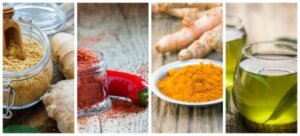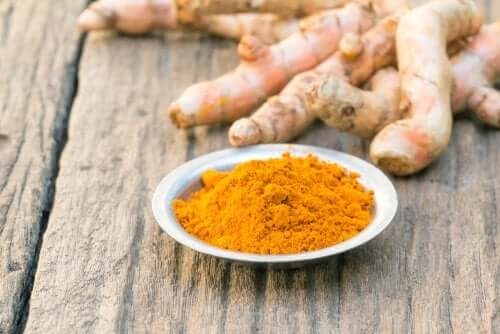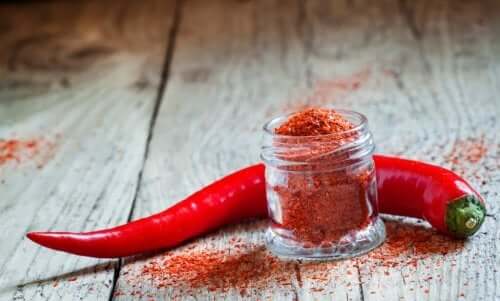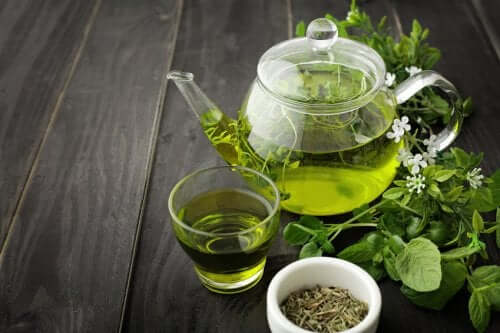Improve Blood Circulation with Natural Remedies

These days, it’s very easy to find and make home remedies since we have access to a world of information. In this article, we’re about to tell you how to improve blood circulation using ingredients you may already have at home. Even though there are medications and supplements to do so, natural solutions are great alternatives. So, would you like to know how to prepare them?
Poor blood circulation often triggers symptoms such as tingling sensation, pain, and inflammation. In fact, in the most severe cases, it’s responsible for other serious cardiovascular diseases. This is why it’s very important to address any irregularities you may have, either with conventional remedies or with natural remedies like the ones below.
Home remedies to improve circulation
When it comes to dealing with poor blood circulation, it’s first important to review your lifestyle. Yes, many remedies can help control it. However, it’s also necessary that you follow a healthy and nutritious diet. In addition, you should avoid a sedentary lifestyle and unhealthy habits such as smoking.
Many diseases compromise proper blood circulation and these should be addressed by a medical professional. Keep in mind that no natural remedies can replace the treatments recommended by a doctor. However, if your problem is mild, then you can surely try these remedies to improve it.
The following remedies are 100% natural. The properties of the ingredients used in them are capable of reactivating circulation, prevent clots and decrease inflammation. However, be cautious with their consumption, especially if you have a serious condition or if you’re currently undergoing pharmacological treatment.
Try out these Five Exercises to Reactivate Blood Circulation
1. Turmeric

Although much scientific evidence is still lacking, it’s believed that a natural beverage with turmeric can stimulate blood circulation and decrease swelling.
Some studies suggest that curcumin, the active compound in turmeric, may contribute to the health of the cardiovascular system. However, more research is still needed to find out how and why.
Ingredients
- 1 c. of water
- 1 tsp. of turmeric
- Optional: honey
Preparation
- Firstly, bring a cup of water to a boil
- While it’s still hot, add the turmeric and let it rest
- Finally, sweeten it with honey and drink
2. Improve blood circulation with cinnamon
Cinnamon is a spice that’s been shown to have some positive effects on human health. However, not everyone should consume it. In some cases, it’s contraindicated and it’s best to be well informed before integrating it into the diet on a regular basis.
A good home remedy to improve blood circulation is a cinnamon infusion. This drink has anti-inflammatory and anticoagulant properties that promote proper cardiovascular health. In fact, it’s often used for controlling high blood pressure.
Ingredients
- 1 c. of water
- 3 tsp. of honey
- 1/2 tsp. of cinnamon powder
Preparation
- First, pour the cinnamon powder into a cup of boiling water
- Then, let it stand for at least five minutes and then sweeten it with honey
- Finally, filter and drink in moderation
Caution: Some studies suggest that excessive consumption of cinnamon could lead to liver damage. Avoid exceeding the recommended amount.
3. Cayenne pepper

According to the Spanish Nutrition Foundation (FEN), pepper contains protein, calcium, iron, magnesium, potassium, phosphorus, riboflavin, vitamins B6 and C, and piperine.
Although more research is still needed, due to its nutritional value, it’s believed that cayenne pepper can contribute to good blood circulation.
Ingredients
- 1 c. of water
- 2 tbsp. of honey
- 1/4 tsp. cayenne pepper
Preparation
- First, heat the cup of water
- When it boils, add the cayenne pepper
- Finally, sweeten it with the honey
4. Ginger
According to popular beliefs, ginger is a food that stimulates blood circulation, so it could be beneficial. It also has anti-inflammatory properties.
Ingredients
- 1 c. of water
- Optional: honey
- 1 tsp. grated ginger root
Preparation
- Firstly, pour the grated ginger into a cup of water
- Then, sweeten it with honey and serve
- Finally, drink in moderation
Important note: ginger is contraindicated in some cases. Therefore, be well informed before consuming it on a regular basis.
5. Improve blood circulation with green tea

Green tea is full of antioxidant compounds that benefit your health. Also, it improves blood circulation, therefore decreasing the risk of other serious heart conditions.
Ingredients
- 1 tsp. of green tea
- 1 c. of water
Preparation
- Firstly, add the green tea to the water and boil it.
- Then, let it steep for a few minutes and then filter it with a strainer
- Finally, drink in moderation (always 45 minutes after the main meal)
Things to keep in mind
Although these remedies can contribute to your well-being, you shouldn’t rely on them alone. Try to maintain an active and healthy lifestyle, away from sedentarism.
The perfect combination for health and wellness is daily exercise and a balanced diet.
If you have any doubts about how to lead a good lifestyle or how to improve it, consult your doctor. The professional will always be able to solve your doubts and help you.
All cited sources were thoroughly reviewed by our team to ensure their quality, reliability, currency, and validity. The bibliography of this article was considered reliable and of academic or scientific accuracy.
- AKRAM, M., SHAHAB-UDDIN, AHMED, A., USMANGHANI, K., HANNAN, A., MOHIUDDIN, E., & ASIF, M. (2010). Curcuma Longa and Curcumin : a Review Article. Rom. J. Biol. – Plant Biol.
- Prasad, S., & Aggarwal, B. B. (2011). Turmeric, the Golden Spice: From Traditional Medicine to Modern Medicine. Herbal Medicine: Biomolecular and Clinical Aspects.
- Rao, P. V., & Gan, S. H. (2014). Cinnamon: A Multifaceted Medicinal Plant. Evidence-Based Complementary and Alternative Medicine. https://doi.org/10.1155/2014/642942
- Fotland, T., Paulsen, J. E., Sanner, T., Alexander, J., & Husøy, T. (2012). Risk assessment of coumarin using the bench mark dose (BMD) approach: Children in Norway which regularly eat oatmeal porridge with cinnamon may exceed the TDI for coumarin with several folds. Food and Chemical Toxicology. https://doi.org/10.1016/j.fct.2011.12.005
- McCarty, M. F., DiNicolantonio, J. J., & O’Keefe, J. H. (2015). Capsaicin may have important potential for promoting vascular and metabolic health: Table 1. Open Heart. https://doi.org/10.1136/openhrt-2015-000262
- Vasala, P. A. (2012). Ginger. In Handbook of Herbs and Spices: Second Edition. https://doi.org/10.1533/9780857095671.319
- Stoilova, I., Krastanov, A., Stoyanova, A., Denev, P., & Gargova, S. (2007). Antioxidant activity of a ginger extract (Zingiber officinale). Food Chemistry. https://doi.org/10.1016/j.foodchem.2006.06.023
- Alexopoulos, N., Vlachopoulos, C., Aznaouridis, K., Baou, K., Vasiliadou, C., Pietri, P., … Stefanadis, C. (2008). The acute effect of green tea consumption on endothelial function in healthy individuals. European Journal of Preventive Cardiology. https://doi.org/10.1097/HJR.0b013e3282f4832f
- Martini, N. (2016). Green tea. Journal of Primary Health Care. https://doi.org/10.1071/HC15914
This text is provided for informational purposes only and does not replace consultation with a professional. If in doubt, consult your specialist.








